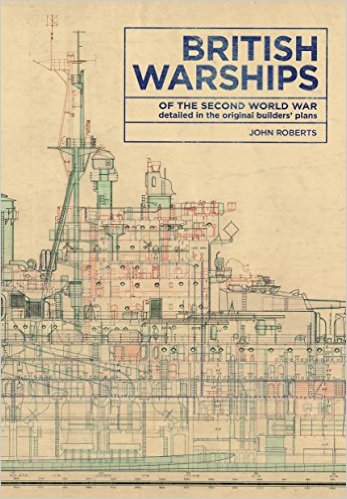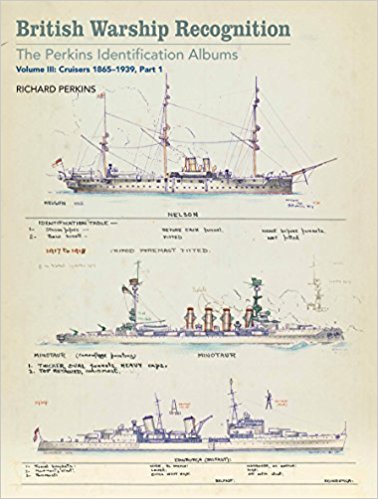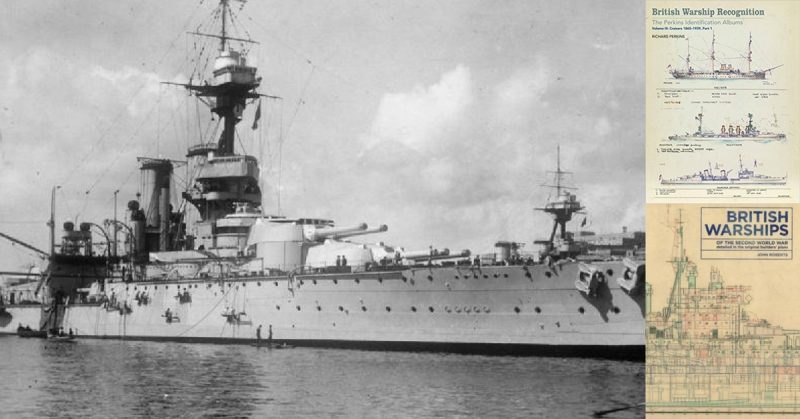Safe to assume regular readers of these ramblings will be up to speed on my interest in warship books and especially the classy photography that often goes with the subject. This latest book takes a very different approach and looks at the myriad of technical drawings that accompanied the classic ships from cradle to grave. This isn’t just an exercise in displaying pretty pictures without a valid reason. Author John Roberts uses a sequence of often incredibly complicated schematics created by the shipyards to show how their vessels were constructed and fitted out.
For me, this is all pretty fascinating, because, as any warship aficionado well knows, how the ships looked when they were first commissioned and how they appeared before their imminent demise were often two very different things. Certainly, a look at any of the Great War-era battleships and battlecruisers of the Royal Navy that survived to the end of World War II will show just how much work was done to modernize them with the inclusion of anti-aircraft guns and communications arrays. The addition of radar technology, aircraft, and other weaponry creates another raft of mods worth considering. Some of these ships were totally rebuilt and are barely recognizable from their earlier selves. So seeing them as intended through the micro-detail of technical drawings is actually quite special.
The great thing here is that the incredible artistry of the draughtsmen is given ample prominence to make the book really work. There are a number of gatefold images that will knock your socks off. I have to say, though, that the book would have benefitted from the inclusion of some photographs to help the reader get a better perspective of what the ships actually looked like. I don’t think it is easy to get such an appreciation from technical drawings alone, however spectacular they may be. Regardless of this, I am really impressed with this book. The author knows his stuff and supports each blueprint with a readable and immensely useful text. His book does all the right things and has enough of the unusual about it to appeal to warship nuts far and wide. If you prefer to get deep into the guts of something rather than gaze at worthy but one-dimensional photos then this might just be what you are looking for.

BRITISH WARSHIPS OF THE SECOND WORLD WAR
Detailed in the original builders’ plans
By John Roberts
Seaforth Publishing
ISBN: 978 1 4738 9068 8
The artist’s pencil box remains center stage with this, the third volume in a sumptuous serious of reproductions of Richard Perkins’ warship recognition books. You may recall he was a diligent enthusiast who built up a vast library of information about the ships of the Royal Navy from the late 19th century until the start of World War II. Mr. Perkins was a superb artist whose drawings are genuinely appealing and I don’t doubt they would find homes on many a well-heeled wall had they not been in the safekeeping of the National Maritime Museum in London.
The book opens with an explanation of the aims and methodology of his work before getting down to business. This time round we are looking at cruisers from 1865-1939. There is enough material on this class of ships to encourage the late Mr. Perkins to spread the subject over two volumes.
I don’t doubt the dimensions of the book; the quality of the reproduction and the style of presentation make this series a bit niche, to say the least. These factors certainly impact on the price tag but this is unavoidable. To make a book as big and beautiful as this one cannot be a cheap exercise. Despite the splendor of the artwork, the publisher doesn’t allow for the intrusion of pointless interpretation; what Mr. Perkins saw is what we get. There can be no complaints.
Faithful reproductions can be genuinely glorious acquisitions. This book and the accompanying volumes give us a chance to own something fairly unique. More importantly, Mr. Perkins work is an important reference tool. His drawings help identify ships from old photographs and they provide a link to a time when his kind of enthusiasm was maintained without a great deal of reference material or the wonders of the worldwide web behind him. His achievement was all down to considerable personal effort.
My problem is finding yet more hyperbole to go with the volumes to follow. I’ll see what I can come up with while you marvel at the beauty of this book. Good, eh?

BRITISH WARSHIP RECOGNITION
The Perkins identification Albums
Volume III: Cruisers 1865-1939, Part 1
Richard Perkins
Seaforth Publishing
ISBN: 978 1 4738 9145 6
Reviewed by Mark Barnes for War History Online.
